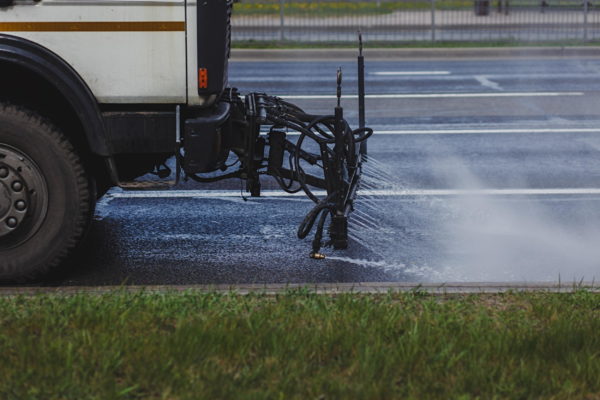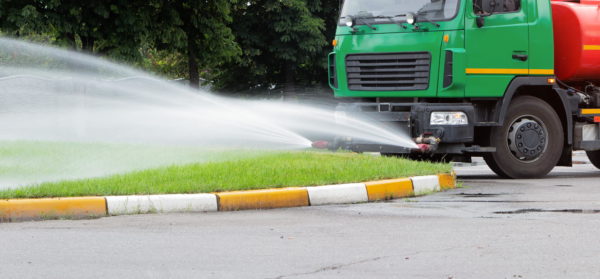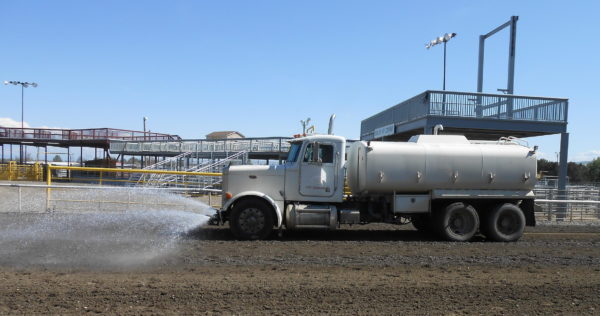Water lorries, water trucks, water tanker trucks or tank trucks can be articulated or rigid tankers of small, medium or large size which are used for carrying water for:
- Agricultural use, e.g. irrigation
- Drinking, e.g. emergency water supplies or rural water supplies
- Firefighting
- Crowd control, e.g. water cannon
- Dust suppression, e.g. road works, quarries
- Motorsports, e.g. speedway track wetting
Water tanker lorries have various attachments that disperse the water, such as:
- Dribble bars – a long transverse bar at the back with holes along its length that dribbles a curtain of water
- Sprayers – an attachment that creates either an arc of finer spray for watering, or a specific localised spray for things like road cleaning
- Water cannon – a pressurised hose
- Various connectors and hoses – for connecting the supply directly to vats or supplies

In many cities worldwide, water trucks provide irrigation to public gardens and verges.

A large water tanker can carry more than 18,000 litres or 4750 gallons of water.
Why are water lorries so useful?
Water tanker trucks are not tanker trucks – they are specific to carrying water or similar liquids.
It’s often inconvenient or impossible to connect to a council water supply in remote areas or for specific applications, for example, in rural areas where water is needed for irrigation or livestock.
When building roads, a water truck can be used to suppress dust and to supply enough water to wet a road surface down for compaction.
In horse racing and speedway, the track may need to be wetted down to create the ideal conditions for racing

Rural fire services may need water to attend to remote scrub fires.
Quarries need to suppress dust which can be carcinogenic if inhaled.
Roadworks need to suppress dust to minimise annoyance to surrounding residential areas and to improve visibility for other road users.
Can you drive a water tanker lorry?
You simply need the right class of driver licence for the size and type of water lorry you’d like to drive.
Water tankers are often fundamentally similar to lorries that carry other liquids for human consumption, such as milk.
Training should be provided on-the-job, or by the manufacturer. Each truck will have its own set of pumps and attachments which you must be familiar with when using them, especially so that you don’t spill it or create any contamination.
